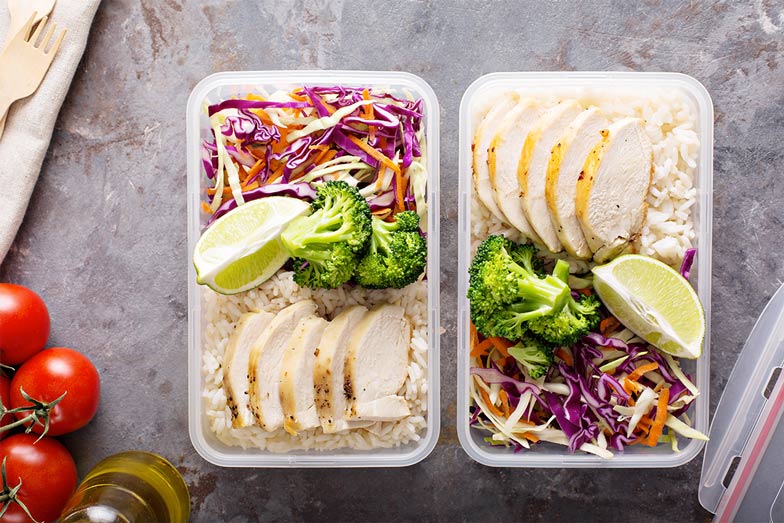Remember those hilariously huge 1980s cell phones? The first one to hit the market was the Motorola DynaTAC 8000x in 1983. It cost more than $5,000, offered a half-hour of talk time per battery charge, and weighed 2 pounds. That’s about what a pineapple weighs!
So many other things have gotten smaller since then: cars, cameras, rock-star hair, the list goes on. One thing that’s gotten bigger, however, is the amount of food offered as a single portion.
Larger food portions sound great, but they can make you gain weight over time. They sure don’t make it any easier to slim down! That said, there’s a big-time silver lining here. Just as bigger portions can make you pack on the pounds, smaller ones can help you lose weight quickly and easily.
Food portioning for the win
Mathieu Bédard knows all about both sides of the portion-control equation. He gained about 50 unwanted pounds by eating oversized portions of bread, potatoes, and rice. Then he shed more than double that amount in just eight months simply by reducing his food portions.
“Losing weight is really about quantity rather than the type of food you’re eating,” the Montrealer says. “You can eat almost all the same foods you’re having now, just in smaller quantities. It’s far simpler than most people might think.”
How big is a portion, anyway?
Portion sizes vary by type of food. According to past versions of Canada’s Food Guide, guys’ daily diet should consist of 7 to 10 servings of vegetables and fruit; 7 to 8 servings of grain products such as whole-grain breads, pasta and brown rice; and 5 to 6 servings of protein foods like meat, eggs and dairy. (The latest edition of the Food Guide is less about portions and more about eating a “variety of healthy foods each day.”)
Need a hand figuring out the size of a serving? You’ve already got two of them! That’s right: This (ahem) handy guide from the Dieticians of Canada shows you how to measure food portions with your hand. One serving of pasta, for instance, is the size of your fist. Put your thumbs together, and that’s the size of a peanut butter serving.
From there, you simply count the servings until you hit the Food Guide’s daily recommendations. When those servings combine to form a meal, hey presto! You’ve got yourself a healthy portion.
How to control food portions
On one hand, food portioning can work weight-loss wonders, just like it did for Mathieu. On the other, there will always be times when measuring and tracking servings isn’t so easy (or even possible). That’s where these tips come in:
Eating out
Remember, restaurant portions tend to be larger than what you would normally eat at home.
- Share appetizers around the table.
- Swap a side order of fries for a side salad.
- Split a large meal with a friend, or pack up part of your meal to take home for lunch or dinner the next day.
- Order a salad and appetizer instead of a large main entrée.
- Craving dessert? Order a “mini” dessert for yourself or a regular dessert with forks for everyone to share.
- Avoid refills of sweetened drinks like pop and iced tea. Better yet, stick to water with a splash of lemon or lime.
Eating in
Homemade meals are ideal for managing portions (and saving money).
- Serve food on smaller plates and bowls. You’ll eat less and feel just as satisfied.
- Fill half your plate with vegetables. This will help you portion protein and whole grains properly.
- Feel like having a second helping? Go for the vegetables or salad.
- Pack leftovers for the next day’s lunch, or freeze for another meal.
Snacking
Choosing healthy snacks keeps your energy up between meals.
- Eating in front of the TV? Keep your snack in a small bowl instead of eating out of the bag or container.
- Keep fresh and healthy snacks in plain sight. You are more likely to reach for these foods when they are close by.
- Limit buying items like cookies, chips, and ice cream.
If you do pick up some junk food — you’re only human, after all — be sure to keep it out of sight, say, by storing it next to your old Motorola DynaTAC 8000x…

Great article but you have linked to the old food guide. The new one does not talk about servings.
Hi Corey, Good catch! We’ve edited the paragraph attributing serving sizes to the old Canada food guide and citing the new food guide which is less about portions and more about eating a “variety of healthy foods each day.” Thanks for your feedback.